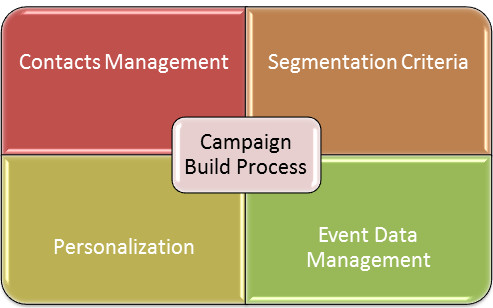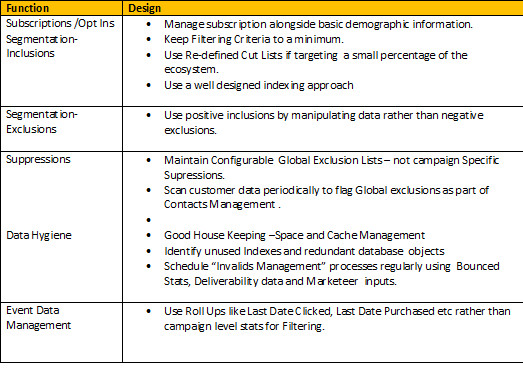Great
!! So you invested in a brand new eEcommerce platform, maybe you are building
your first digital storefront ( Hooray !! we are online) or have moved over to
an enterprise solution from the horrors of a “legacy portal you could buy from”.
Congratulations !! Tu est arrive but like Robert Frost would put it, you have
miles to go before you can sleep. All
that glitters ,people, is in fact gold. Beyond all the fancy feature sets of
the shiny new platform - cloud, SAAS, PAAS, scalability, hyper performance,
engagement / CX features, fancy reporting et al, here are three “internal”
projects that will turbocharge your ecommerce site and drive what you are
fundamentally paid to do – drive conversions. You will need a couple of R /
python folks and a repository to hold the information. A word of caution though – please don’t have
these snippets running from your commerce transaction db… ever !!
1)
Cross / Up Sell:
A good cross / up sell strategy can improve
retention and more importantly top line by anywhere between 10 – 30% depending
on how personalized these offerings are. I know, I know.. your shiny new platform comes
in built with this capability-it says so in the brochure and we did see the
demo you see.. Great !! But what is not generally communicated in black and
white is that while digital sales enablers have the capability to manage product
configuration and merchandizing (ie Prod
A is a cross sell along with Prod B & Prod C - Display B and C whenever A
is viewed), they rarely if ever have the intelligence to identify that A must be sold in conjunction with B and
C. It is the marketer who needs to spot and utilize this correlation. Why not
put in a recommendation engine – you ask? Good Question –but do reco engines utilize all the information at your disposal
aka first party data- think browsing, transactions, engagement, response to
campaigns, demographics and personalize to a 1:1 level? Do you as a marketer
control the vagaries of the “algorithms” behind the scenes? Can you tweak the
logic for a specific segment alone? I
guess not – so get started on a Associative Algorithm dev – by all means use Tensor flow or Azure ML but know what
you are building and why…
2)
Multi stage Retargeting:
Retargeting – cart , search and page drop
out in so many forms has been beaten to death in marketing forums and I will
not go into a eulogy of the technique. A study says that roughly every third
marketing tool and Multi Stage Cart Drop
out retargeting generates
20 -30% additional topline.. Doubt it? We can split hairs over the
individual products and features but the
primary take aways for Ecom managers are
1) Employ a multi
stage retargeting touch point for your cart drop outs. A blind man could spot
the value!!
2) What is not so
easily discernible for the modern marketer is that
a. You need a strong bi-directional
integration between your Ecommerce and Marketing Automation platform. Yes, data needs to pass both ways for marketers
and systems to learn, personalize and retarget with Relevance , Context and Timeliness.
b. You need to
strategize the “Drop event” as a
Customer Journey, platforms call them Programs – another fancy technical name
is Orchestrated Multi Channel Campaigns.
Again bring the customer context here to personalize as much as you can.
3)
Transactional Marketing:
This
is the opposite of strategic marketing where you use recent behavior changes (note
the operative word changes) to start
influencing customers to behave the way you would like them to. Such Promotional
techniques provide anywhere between 5% - 15% additional top line.
Check out this link from Mckinsey.
Some
use cases you could drive are
1) Discount Ladders : Providing differential discounts for the same product
based on customer segment and behavioral patterns.
2) Trip wire Marketing: Triggering
contextual experience based on a repetitive purchase factor like an anniversary
or a replenishment date.
3) Browse Frequency: Customer
browses a particular product page more than 3 times in the last five days. What
would you do - as a marketer and a
modern one at that ? Let’s say he is a high net worth customer, would there be
any difference in how you would engage with him? Let’s bring some context here,
a basic lookalike modeling suggests
that, customers similar to this guy are generally lost by the end of the 6 th
month and we are at a churn point with this guy right now. Does that change things
on what you next best action could be? How can you automate this and be
flexible at a segment of 1?
So
, go ahead and take your brand new shiny platform for a spin with these
innovations. There are more in the pipe
though. We just talked merchandizing vs customers. Content ( Text, Image and
Color) Personalization could be a great area to target and so could Search personalization
using Learning to Rank (LTR) algorithms
like Gradient boosting, CART, ADA and MART. Happy Tinkering !!


































